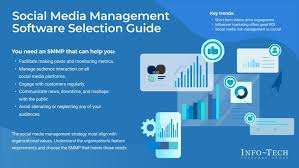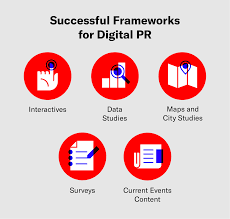Mastering the Art of Effective Communication in the Digital Age
The Art of Effective Communication
Communication is a fundamental aspect of human interaction. It plays a crucial role in conveying ideas, emotions, and information effectively. Whether it’s verbal, non-verbal, written, or visual, communication is essential for building relationships, sharing knowledge, and achieving common goals.
Effective communication involves not only expressing oneself clearly but also listening actively to others. It requires empathy, understanding, and the ability to convey messages in a way that resonates with the intended audience.
One key element of effective communication is clarity. Messages should be concise, coherent, and free from ambiguity to avoid misunderstandings. Using simple language and avoiding jargon can help ensure that your message is easily understood by all recipients.
Another important aspect of effective communication is active listening. This involves paying attention to what others are saying without interrupting and showing empathy towards their perspective. By actively listening, you can better understand the needs and concerns of others and respond appropriately.
Body language also plays a significant role in communication. Non-verbal cues such as facial expressions, gestures, and posture can convey emotions and intentions more powerfully than words alone. Being aware of your own body language and interpreting the body language of others can enhance the effectiveness of your communication.
In today’s digital age, technology has revolutionised how we communicate. From emails and instant messaging to video calls and social media platforms, there are numerous ways to connect with others across distances. However, it’s important to remember that digital communication lacks the nuances of face-to-face interaction and can sometimes lead to misinterpretation.
Overall, effective communication is a skill that can be honed through practice and self-awareness. By being mindful of your language, listening actively to others, considering non-verbal cues, and adapting your communication style to suit different situations, you can become a more proficient communicator.
Remember that good communication is not just about speaking; it’s about connecting with others on a deeper level and fostering meaningful relationships based on mutual understanding and respect.
9 Essential Tips for Effective Communication
- Be a good listener and show genuine interest in what others have to say.
- Use clear and concise language to convey your message effectively.
- Maintain eye contact during conversations to demonstrate attentiveness.
- Be mindful of your body language as it can impact how your message is perceived.
- Ask questions to clarify any uncertainties and show that you are engaged in the conversation.
- Practice empathy by trying to understand the perspective of the person you are communicating with.
- Avoid interrupting others while they are speaking, and wait for your turn to contribute.
- Give constructive feedback rather than criticism, focusing on solutions rather than problems.
- Express appreciation for others’ contributions and efforts to foster positive communication.
Be a good listener and show genuine interest in what others have to say.
To enhance your communication skills, it is essential to be a good listener and demonstrate genuine interest in others’ perspectives and opinions. Actively engaging in conversations by listening attentively not only shows respect for the speaker but also allows for a deeper understanding of their thoughts and feelings. By showing genuine interest in what others have to say, you can build stronger relationships, foster trust, and create a more positive and collaborative communication environment.
Use clear and concise language to convey your message effectively.
Using clear and concise language is essential in effectively conveying your message. By eliminating unnecessary words and jargon, you can ensure that your communication is easily understood by your audience. Clarity in language helps to prevent confusion and misunderstandings, allowing your message to resonate with clarity and impact. Whether speaking, writing, or presenting information, choosing words carefully and keeping them succinct can enhance the effectiveness of your communication, making it more engaging and memorable for those you are communicating with.
Maintain eye contact during conversations to demonstrate attentiveness.
Maintaining eye contact during conversations is a powerful way to demonstrate attentiveness and show respect to the person you are speaking with. It conveys interest and engagement, making the other person feel valued and heard. Eye contact helps build trust and connection, fostering better communication and understanding between individuals. By looking into someone’s eyes while conversing, you signal that you are fully present in the moment and actively listening to what they have to say.
Be mindful of your body language as it can impact how your message is perceived.
Being mindful of your body language is crucial when communicating, as it can significantly influence how your message is perceived by others. Your gestures, facial expressions, and posture can convey emotions and intentions that may either reinforce or contradict the words you are saying. By paying attention to your body language and ensuring that it aligns with your verbal communication, you can enhance the clarity and effectiveness of your message, leading to better understanding and rapport with your audience.
Ask questions to clarify any uncertainties and show that you are engaged in the conversation.
When engaging in a conversation, it is important to ask questions to clarify any uncertainties and demonstrate active engagement. By seeking clarification on points that are unclear or ambiguous, you not only show your interest in the discussion but also ensure that you have a clear understanding of the topic at hand. Asking thoughtful questions can help deepen the conversation, encourage dialogue, and foster a sense of mutual understanding between all parties involved.
Practice empathy by trying to understand the perspective of the person you are communicating with.
When communicating with others, it is essential to practice empathy by making an effort to understand the perspective of the person you are engaging with. By putting yourself in their shoes and considering their thoughts, feelings, and experiences, you can foster a deeper connection and mutual understanding. Empathy allows you to communicate more effectively by showing respect, validating their viewpoint, and building trust in the interaction. It is a powerful tool that enhances relationships and promotes positive communication outcomes.
Avoid interrupting others while they are speaking, and wait for your turn to contribute.
When engaging in conversations, it is essential to refrain from interrupting others while they are speaking and instead, patiently wait for your turn to contribute. By allowing each person to express their thoughts without interruption, you demonstrate respect and attentiveness towards their perspective. This practice fosters a conducive environment for effective communication, where all voices are valued and heard, leading to more meaningful and productive interactions.
Give constructive feedback rather than criticism, focusing on solutions rather than problems.
When communicating, it is important to provide constructive feedback instead of criticism. By focusing on solutions rather than problems, you can help individuals grow and improve in a positive way. Constructive feedback offers actionable suggestions for improvement and encourages a collaborative approach to addressing challenges. This approach fosters a supportive environment where individuals feel empowered to learn from their mistakes and strive for continuous development.
Express appreciation for others’ contributions and efforts to foster positive communication.
Expressing appreciation for others’ contributions and efforts is a powerful way to foster positive communication. By acknowledging and valuing the work and input of others, you not only show gratitude but also build trust and strengthen relationships. Recognising the efforts of your colleagues or team members can boost morale, motivation, and overall productivity. It creates a supportive and inclusive environment where individuals feel valued and respected, leading to more effective collaboration and communication within the team.












